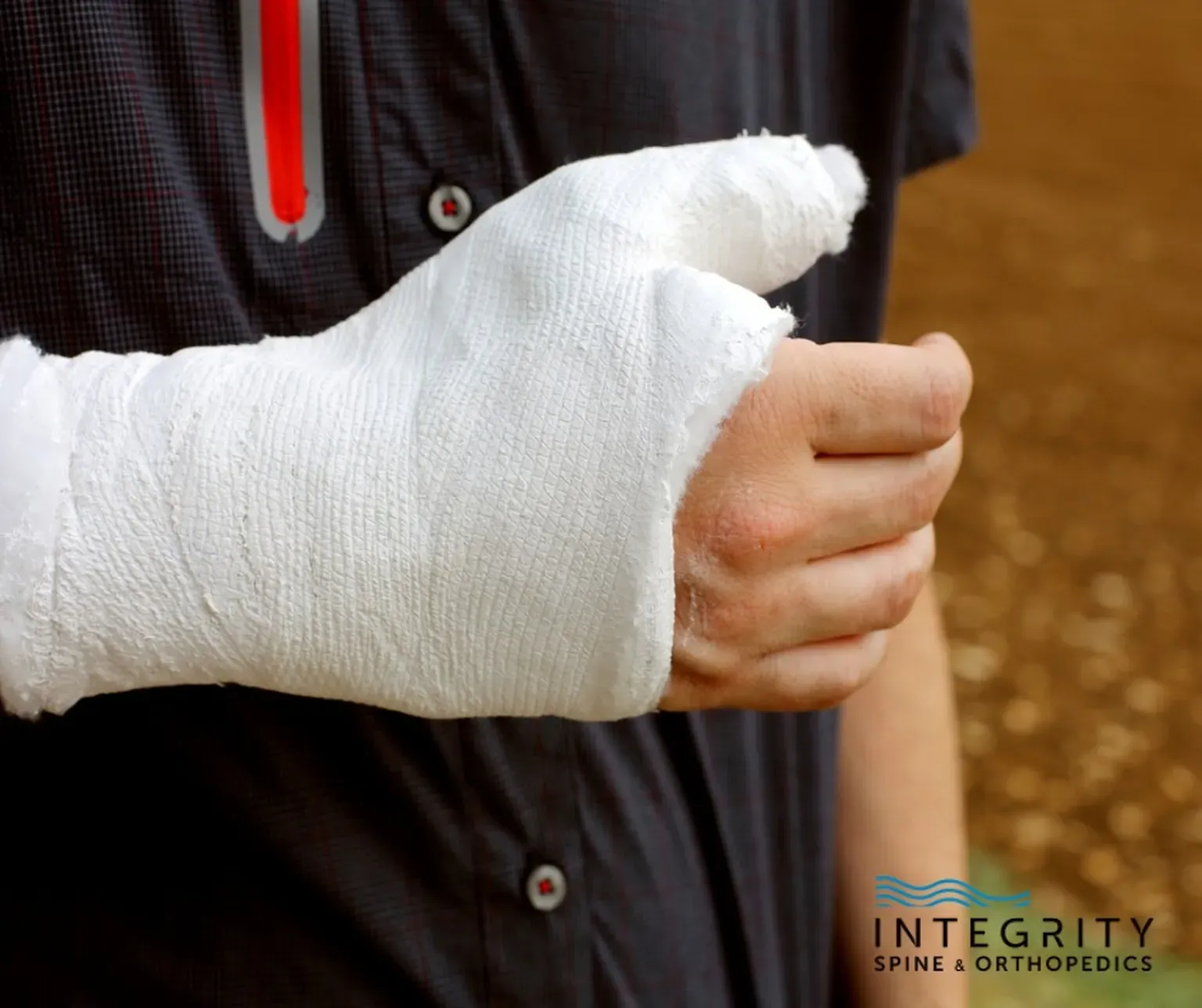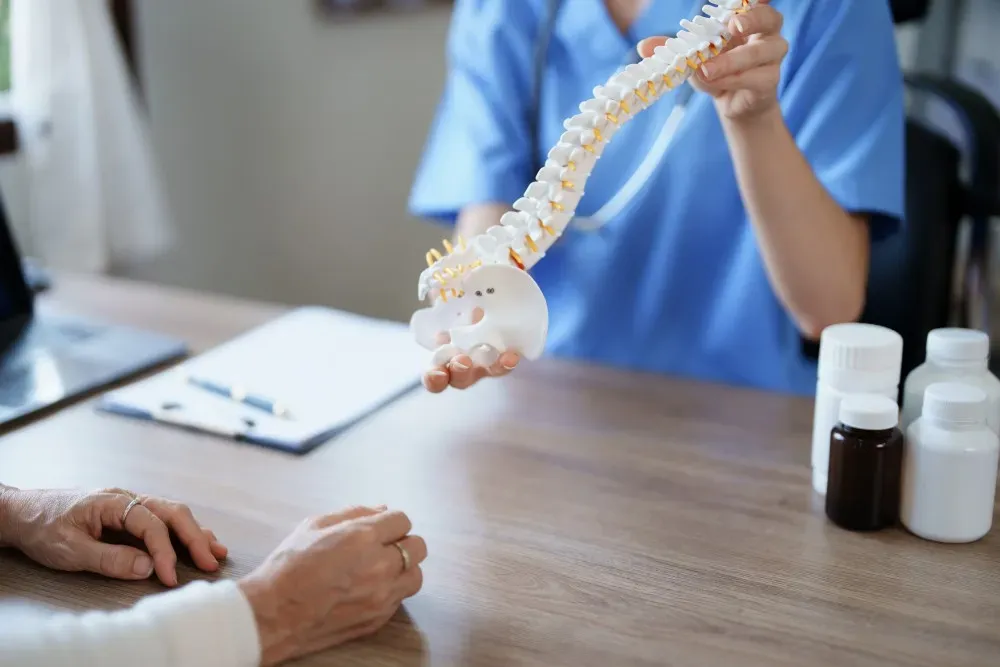Neurosurgery & Orthopedic Surgeons in Jacksonville

How Are Bone Fractures Treated?
Per year, approximately 6.8 million people in the U.S. experience a bone fracture. Human bones are incredibly strong (as strong as steel), but they will still break when an outside force or impact is applied and exerts more pressure than the bone can bear.
Per year, approximately 6.8 million people in the U.S. experience a bone fracture. Human bones are incredibly strong (as strong as steel), but they will still break when an outside force or impact is applied and exerts more pressure than the bone can bear. Falls, car accidents, sports accidents, direct blows and overuse are leading causes of fractures in people of all ages. Osteoporosis — a medical condition that causes bones to become weak and brittle — is a leading cause of fractures among adults aged 50 and older.
Fractures of any kind require immediate medical care and attention. And it’s highly likely that you’ll know right away if you break a bone after a traumatic incident. Broken bones cause severe pain, swelling and an inability to move the injured area or bear weight on it. You may experience bruising, redness and warmth at the fracture site. It’s possible you may have a visible deformity or a bone that breaks through the skin.
Keep reading to learn more about common types of fractures and how they’re treated.
COMMON TYPES OF FRACTURES
There are multiple ways for bones to break and therefore multiple ways that broken bones are classified. To begin, bone fractures are identified as follows:
- Closed or open. A closed fracture is one where the bone hasn’t broken the skin. An open fracture is one where the bone has broken the skin and is at high risk of getting infected.
- Partial or complete. A partial fracture is one where the bone hasn’t broken completely. A complete fracture is one where the bone has broken completely into 2 or more pieces.
- Nondisplaced or displaced. A nondisplaced fracture is one where the bone hasn’t moved out of place. A displaced fracture is one where the bone has moved out of proper alignment.
Under the categories listed above, there are multiple specific types of fractures that are classified based on how the bone breaks.
- Stress fracture. A stress fracture is a small hairline crack that develops in the bone. It’s a common injury among athletes because they’re usually caused by repetitive stress placed on the bone from activities like running or jumping.
- Compression fracture. A compression fracture is a spinal fracture that develops when a vertebrae is crushed and flattened. It’s more common in older adults who experience a natural loss of bone mass with age. Compression fractures can develop from a fall, osteoporosis, or any event that places excess pressure on the spine.
- Avulsion fracture. An avulsion fracture occurs when a small piece of bone is pulled off and separated from the main bone by a tendon or ligament.
- Impacted fracture. An impacted fracture occurs when the broken ends of bones are driven together by force at the point of the break.
- Comminuted fracture. A comminuted fracture occurs when the bone breaks into 3 or more bone fragments.
- Spiral fracture. A spiral fracture occurs when the break spirals around the bone. A spiral fracture is a common result of twisting injuries.
- Transverse fracture. A transverse fracture occurs when the bone breaks in a horizontal line across the long axis of the bone.
- Oblique fracture. An oblique fracture occurs when the break is in a curved or diagonal direction across the bone.
- Pathologic fracture. Pathologic fractures are caused by a disease or underlying medical condition. Osteoporosis and cancer are 2 conditions that can lead to weak bones that fracture more easily.
The type of treatment you’ll need — and whether or not you’ll need surgery — depends on the type, severity and location of your fracture.
WILL I NEED SURGERY?
The good news is that many fractures can be treated without surgery. Your doctor will take an X-ray to determine the type and location of the fracture and determine the appropriate treatment plan from there. If the fracture doesn’t require surgery, a plaster cast or sling will be used for treatment. It’s critical that a broken bone remains immobilized during the recovery process to ensure it heals in the proper position. Over the 6-8 weeks following your injury, new bone will grow around the broken edges of a fracture.
Some severe bone fractures require surgery, especially if bones need to be reset in proper alignment or if there are multiple pieces and bone fragments to reconstruct. Additionally, hip fractures and long bone fractures almost always require surgical repair because these bones are difficult to hold immobilized. The most common fracture surgery is an open reduction and internal fixation. During the procedure, your surgeon will align the pieces of your broken bone and fix them in place using screws, rods, pins or plates. Internal fixation ensures that your fracture is immobile and stabilized so it can heal properly. Some fractures require external fixation, where screws, rods and plates are placed on the outside of the body to hold a fracture in alignment. The hardware may be removed after a fracture heals or left in permanently.
The average recovery period is 6-8 weeks. In the beginning, you’ll be given medications to help control your pain and reduce the risk of infection. The pain will likely fade long before the full 6-8 weeks is up. During the healing process, you’ll need to modify your activities to keep the fracture site stable and move the broken bone as little as possible. After your fracture is healed and the cast is removed, you may have some muscle weakness in the affected area. Your doctor may prescribe a course of physical therapy to help re-strengthen your muscles and regain full range of motion. A therapist can also work with you to determine when it’s safe to return to more high-impact activities.
CALL INTEGRITY SPINE AND ORTHOPEDICS TO TREAT BONE FRACTURES
At Integrity Spine and Orthopedics, we offer several treatment options for a range of spine, joint and musculoskeletal conditions, including fractures and car accident injuries. Our board-certified orthopedic surgeons specialize in:
- General orthopedic care and treatment
- Pain management
- Regenerative medicine
- Minimally invasive spinal procedures
We’re ready to help you get the care and treatment you need to get back on your feet and back to your normal activities. Call us today at 904-456-0017 or reach out online to schedule an appointment.




